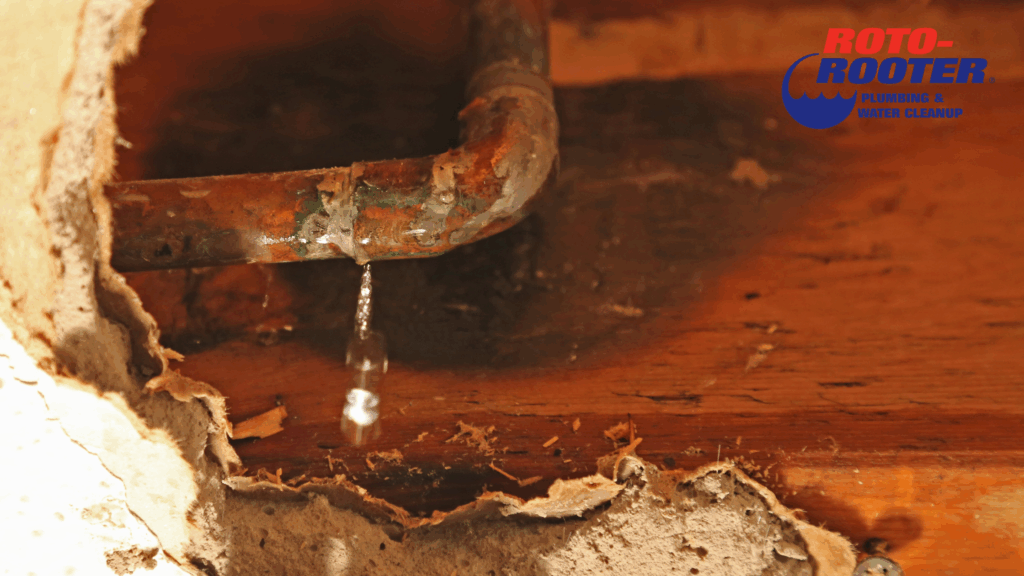A small drip today can become a costly catastrophe tomorrow. In homes across the country, minor plumbing leaks often go unnoticed until visible damage or mold growth appears. For homeowners, mastering early detection and response is the best defense. At Roto-Rooter, we see firsthand how swift action can prevent structural damage, protect indoor air quality and safeguard your health.
Why Leaks and Moisture Are So Dangerous
Leaks may seem harmless at first, but they introduce a persistent threat: water infiltration. Over time, moisture seeps into drywall, wood, flooring and insulation, weakening structures and undermining finishes. Water damage isn’t always dramatic—it can manifest as discoloration, bubbling paint, warped floors or dampness behind cabinetry. Left unchecked, this concealed moisture becomes a prime environment for mold propagation.
Mold spores are naturally present indoors and outdoors, but without moisture, they remain dormant. A plumbing leak creates perfect conditions for mold to spread—often within 24 to 48 hours. Once established, mold can colonize surfaces, degrade building materials and impair indoor air quality.
The Health and Home Risks of Mold
When mold becomes established, it poses more than just aesthetic problems. Many molds release airborne allergens and irritants. In sensitive individuals, exposure can trigger respiratory irritation, coughing, sneezing or asthma exacerbations. Over the long term, mold growth can compromise walls or structural materials, leading to repairs far more costly than preventive measures.
Beyond health and structural risks, mold often falls outside standard homeowner insurance coverage. Many policies exclude damage caused by gradual leaks or persistent moisture. This means if a leak silently grows, the homeowner may assume full responsibility for remediation.
Signs of a Hidden Leak Before Mold Takes Hold
Catching leaks early is critical. Some of the telltale signs include:
- Unexplained increases in your water bill
- Persistent damp or musty odors in cabinets, basements or crawl spaces
- Stained or discolored walls, ceilings or baseboards
- Bubbling paint, peeling wallpaper or swollen drywall
- Soft or sagging flooring
- Persistent condensation, even when humidity is controlled
- Sounds of dripping or running water when fixtures are off
If one or more of these signs emerge, it’s time to investigate immediately.
Steps Homeowners Should Take Immediately
- Shut off water and isolate zones. If you suspect a leak, turn off supply lines for affected areas to prevent further damage.
- Open walls or surfaces to inspect. Peeling drywall or baseboards often reveal hidden moisture behind them.
- Dry thoroughly. Use fans, dehumidifiers or forced air to dry the space. Mold thrives in moist environments, so eliminating moisture is essential.
- Clean and disinfect. Non-porous surfaces affected by mold can often be cleaned, while porous materials (insulation, drywall) may need removal.
- Repair the source. Fix leaking pipes, worn seals or damaged fittings—not just the symptoms.
Monitor and prevent recurrence. After remediation, keep an eye out for moisture or mildew and maintain proper ventilation.
When to Call Professionals
Some mold scenarios go beyond DIY capabilities. You should engage professionals when:
- The affected area exceeds 10 square feet
- Mold is hidden behind walls or beyond visual inspection
- HVAC or ductwork is involved
- The leak is within structural systems, like slabs or roofing
- You have health sensitivities or respiratory conditions
A qualified plumber can identify the leak’s origin, perform repairs and collaborate with mold remediation specialists to ensure a safe, thorough restoration.
Why Early Detection Saves You Money
- Lower repair costs – Repairing a small burst pipe or localized mold is far cheaper than full wall reconstruction.
- Reduced health risks – Preventing mold limits the need for medical treatment or long-term health consequences.
- Preserve property value – Water and mold damage undermine resale value and complicate insurance claims.
- Insurance advantages – When swift repairs are documented, insurers are more likely to accept claims tied to sudden incidents rather than gradual damage.
Plumbing leaks and mold are quiet threats that escalate fast. The difference between a minor repair and a full-scale restoration often comes down to when the problem is detected. At Roto-Rooter, our mission is to help homeowners recognize leaks early, act decisively and protect both their homes and health. If you suspect a leak or evidence of moisture trouble, don’t wait. Contact us early, and your home will thank you.
